Email in focus: What to do about Apple’s iOS 15 Update
August 6, 2021 •Dean Morris

Disruption is the name of the game.
On average, brands are sending 25% more emails to customers this year compared to 2020*. As all good brands (and marketers) know, however, the goalposts are constantly shifting. Consumer behaviour, tech offerings, and privacy legislation are changing rapidly so retail and direct-to-consumer brands have their work cut out to stay ahead.
For owners or founders whose brands grew from a love of design or passion for a particular product, this can all feel a little overwhelming. Faced with the realities of trying to compete in a crowded market and stay on the right side of privacy requirements, it can be easy to focus on the wrong metrics. Ultimately, direct brands need to focus on the three key growth levers: customer acquisition, customer retention, and order value. Email is (and will remain) a major marketing channel but big changes are on the horizon.
What does iOS 15 mean for direct brands?
Apple’s latest update is due as early as September and will continue Apple’s pattern of pushing privacy and security for users. Once the update is rolled out, users will be able to:
- turn off open tracking (if or when they open an email)
- hide their IP address
- hide their email address
Globally, 4.1 billion people use email and this is projected to rise to 4.48 billion in 2024 (according to recent analysis from Statista). Given Apple’s market share, this will have a huge impact on how marketers measure email engagement. But should you panic? Definitely not – iOS 15 will bring change and change brings opportunity.
So what should you do?
Measure clicks and conversions, not opens
Open rate is mainly used as an indicator for engagement. Whilst a high open rate might give a nice ego boost, good marketers know that clicks and conversions are the metrics that really matter. Anything else just clouds your vision.
I know brands may be concerned about the potential impact of the iOS 15 update but my view is that it’s a positive move that will improve general marketing behaviour across the board. If you’re optimising based on clicks and conversions instead of open rate, you will build better campaigns that your most engaged customers will enjoy. Your numbers may be lower but your proportion of quality engagements will increase, driving conversions and revenue.
Over time, you’ll learn which subject lines and CTAs drive the best customer engagement and contribute to actual conversions – which is no bad thing.
… but do use opens to clean your lists while you still can
While we still have good opens data, now is the time to clean your lists and clear out inactive subscribers. This should be a focus for this month as the update will affect deliverability tracking. If you use re-engagement campaigns, you should bump your timelines up before September to give subscribers the best chance of re-engaging before cleansing your list.
Consider also flagging those customers with a high open rate but low (or non-existent) click rate. While these customers may not all be your best customers, they are engaged and have the potential to become high-value. Think about creating a separate segment for those customers now and definitely don’t remove them from your lists – they may not be clicking but they’re worth nurturing (though I would advise measuring them separately to your main segments as they may skew your reporting).
Use other indicators to fuel your email campaigns
Traditionally, over-reliance on open rates to inform and build email campaigns can mean that other triggers get overlooked. Use Apple’s update as a reason to focus your energy on actual and predicted purchase activity instead. Recency, frequency and order value are better indicators of customer engagement and should form the foundation of your email strategy.
Right now, you should be looking at your existing workflows and identifying where you’re relying on email opens as a trigger so you can find other data points to use instead.
Like many brands, a lot of my clients saw huge increases in new customer acquisition online during last year’s lockdowns so I’d advise using recruitment anniversary as a reason to get in touch again.
Be honest
There will be a media buzz when the update gets rolled out so most customers will be aware of the changes, even if they aren’t crystal clear on what the implications are.
As a brand, the best thing you can do to build a relationship with your customer is to be honest with them. When you’re collecting a customer’s data, be transparent about why you’re asking for their information and how you’ll use it. Take the opportunity to highlight the benefits (including more accurate size recommendations, product suggestions and VIP treatment) and reassure your customer that it’s worth their while to share their information with you.
Think about other channels
No channel exists on its own; your marketing ecosystem delivers multiple touchpoints to drive a single sale. While email is brilliant for sending reminders about abandoned baskets or birthdays, push notifications, SMS and social channels can and should complement a good email strategy. First-party data will be key to linking the customer journey across channels so make sure you are asking customers to enrich the data they share with you (and, like I said earlier, always explain the benefits this will bring your customer).
In summary
Apple’s iOS 15 update will have an impact on email marketing but that’s no reason to despair. Clever brands and marketing teams will see the opportunity to improve the way the measure email performance and will use the learnings to build even better, more optimised campaigns.
Over the next few weeks at more2, we’ll be focussed on:
- Understanding how engagement metrics relate
- Creating audience segments now based on open rates before the cut-off
- Advising how best to measure engagement, using customer segments to make decisions
- Helping clients to further personalise their email strategies to drive better engagement
If you’d like to learn more about this or see how your brand can get ready for the change, get in touch below!
*across more2's client base

